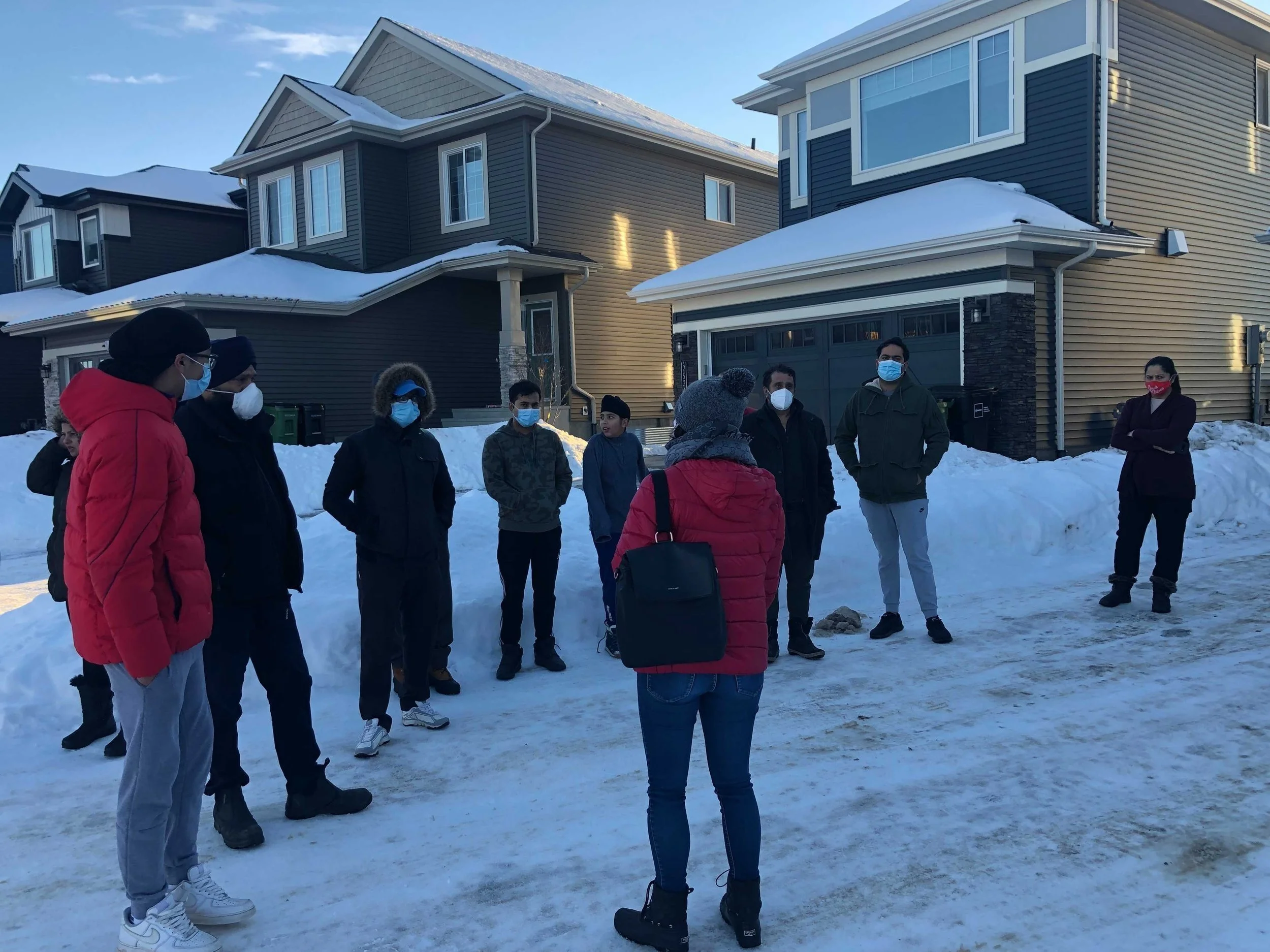Snow and Ice
Driveway community meeting in Walker Lakes - January 2022
An elderly woman hasn’t left her home for a week because of the pile-up of windrows in front of her home. She doesn’t have the capacity nor the resources to remove the snow.
A young mother struggles to strap her child in the car seat because another windrow pile-up is blocking her access.
Neighbours worked hard to clear the one-and-only storm drain in their crescent during the heavy snow falls, only to have it blocked again by windrows after blading.
The now narrowed sidewalks, on top of the icy conditions accumulated from multiple freeze-thaws, are making it more and more difficult for people to enjoy a walk in their neighbourhood, which for some is the only outdoor respite they are getting this winter. For those navigating the streets and sidewalks in wheelchairs, the current conditions are simply impassable.
Over the weekend, we had a driveway community meeting in Walker Lakes about the state of their streets. This is the same neighbourhood where I heard a disproportionate amount of feedback at the doors on the campaign trail over the summer time about the lack of services in cul-de-sacs and residential streets. These folks are not alone.
And the stories go on and on and on.
Why is snow removal happening the way it is?
Our snow and ice policy is under constant scrutiny - every winter you can say. Early in 2021, an extensive audit of our Snow and Ice Control Audit, resulted in the previous City Council upgrading the policy. This winter is in fact the first time we’re seeing this policy applied, which does involve more blading.
(Councillor Andrew Knack wrote a 3-part blog on snow removal that includes extensive notes on history, policy changes, and ideas: andrewknack.ca/blog.)
On top of that, the current Council approved a pilot project this fall in an effort to increase service levels on residential roads, which are the lowest priority (priority 4) and generally get serviced last. Our streets are now bladed down to the asphalt instead of the usual 5cm snow pack. I supported this motion during the discussion because of the overwhelming feedback I heard and am still hearing from residents about the service levels in their neighbourhoods, cul-de-sacs, and crescents.
However, all these developments are resulting in the unfortunate consequence of windrows (the big piles or rows of snow that are pushed to the side of the road by snowplows). Many of these have not been carted away and are blocking driveways, sidewalks, walkways, and storm drains. The feedback we are receiving from ward residents is also consistent with what I’m hearing from some snow removal workers on the frontline.
For more information, please see this Twitter thread from the City.
What are other cities doing?
As part of the snow removal conversation, this question also comes up every year. Cities across the country have very different processes, tools, contexts, and weather patterns. The Snow and Ice Control Audit (January 2021) looked into this (starting on page 25). As well, many people look to Montréal as an exemplar. I can relate having experienced Montréal winter for many years. At the same time, Montréal spends 3x our budget on snow removal and has a wider range of tools to work with.
What can you do?
If you are facing challenges with piled windrows, unsanded and unbladed streets, the best thing is to:
Call 311.
Then contact our office at 780-496-8142 or keren.tang@edmonton.ca.
We will follow up right away to make sure something gets done.
311 is the fastest method to respond to inquiries because the process is automated to directly route concerns to the correct yard for inspection and action.
How can we do better?
While I strongly agree that snow removal is everyone’s business, the City can do a much better job leading by example, so that together we can all work towards better quality of life for Edmontonians.
We need to prioritize accessibility. We need to understand the reasons that Edmontonians may be unable to take on the responsibility of snow removal, and find ways to support them where they make sense (e.g. Seniors Home Supports Program).
Ideas like public awareness campaigns that communicate to property owners, commercial landlords, City staff, and Edmontonians the impact of snow removal on people living with disabilities are not new. Yet there has been little movement to bring these ideas from Edmontonians to life.
Past partnerships like the one the City had with Community Leagues in terms of grants that provided snow removal tools for neighbours to help neighbours is worth expanding and scaling with more communities.
The snow and ice policy is due back for a review in April. And it certainly begs questions like the ones that Councillor Knack asks “Would you be comfortable if we increased the budget to remove things like windrows?” Or even Councillor Cartmell’s “Is it time to start from scratch?”
Whatever we end up doing, however, we need to co-develop the policy with Edmontonians AND frontline workers, so that our policy is rooted in experience.
What can we do in the meantime?
If you are facing challenges with piled windrows, unsanded and unbladed streets, the best thing is to:
Call 311, which remains the fastest method to respond to inquiries because the process is automated to directly route concerns to the correct yard for inspection and action.
Then contact our office at 780-496-8142 or keren.tang@edmonton.ca.
We will follow up right away to make sure something gets done.
Winter is no stranger to us, and while this winter is much more extreme than in the past, it is absolutely frustrating to feel we can't get this right. While we continue to chip away at the policy work, thank you for your cooperation by moving your car during parking bans, for clearing sidewalks where feasible, and I also want to thank the frontline workers and contractors for working around the clock to maintain our streets.
